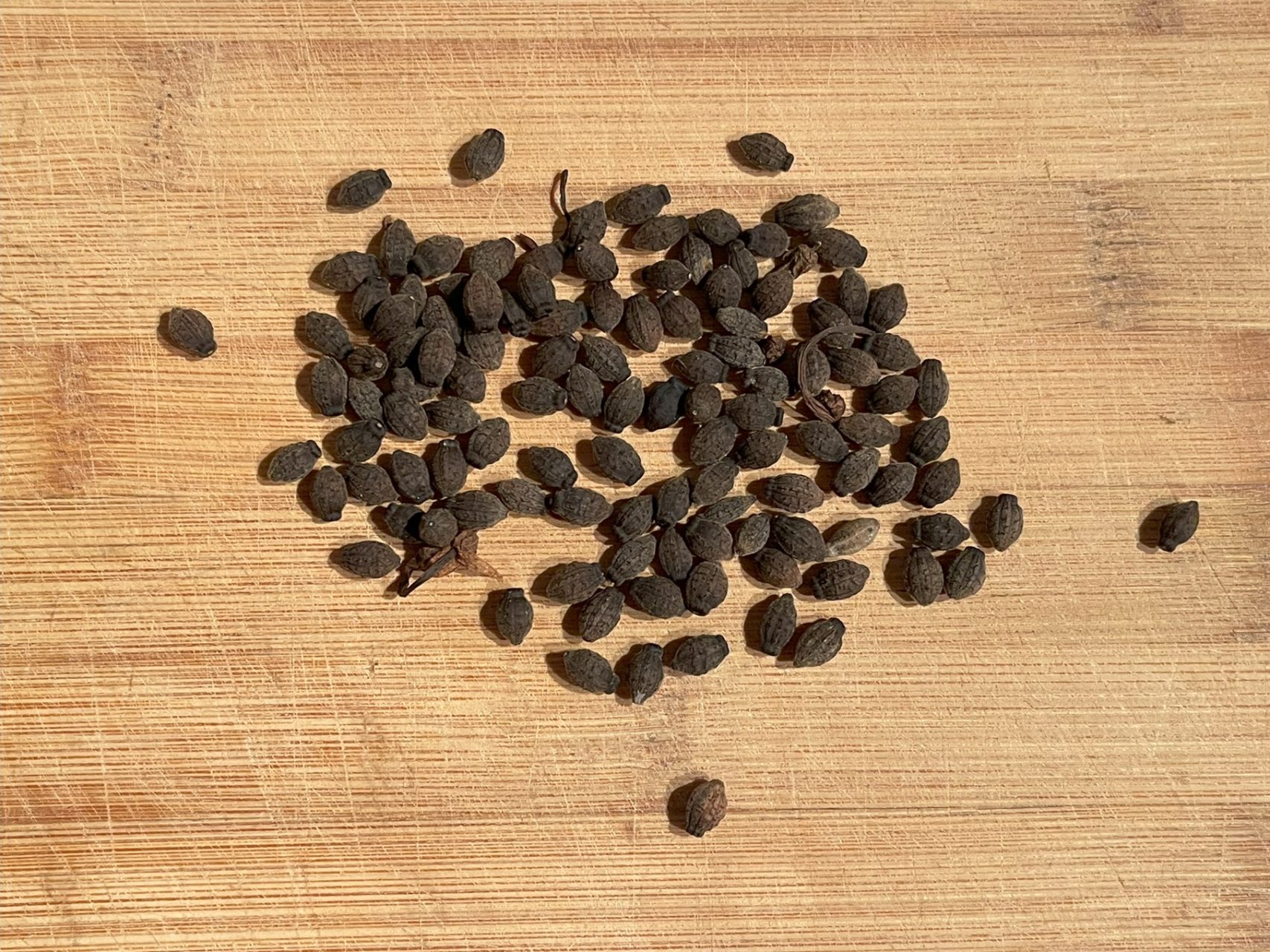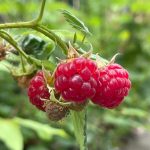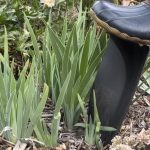Indoor Seeding Dates for Vegetables and Annual Flowers
Growing a garden is a beautiful way to connect with nature and can be a great source of fresh, healthy produce. However, if you’re starting a garden from seeds, especially in colder growing zones, it’s important to start seeds indoors.
Timing is integral to gardening, and it can be a little tricky to figure out the details about when is the best time to start your seeds indoors ahead of spring.
Get ready to take your gardening skills to the next level as we cover:
- The Benefits of Starting Your Own Plants from Seed in Zone 3 and Zone 4 Gardens
- Factors to Consider Before Starting Seeds in Colder Climates
- Choosing the Right Seeds for Zone 3 and Zone 4 Gardens
- How to Calculate and Plan Your Indoor Seeding Schedule
For everything you need to know about when to start seeds indoors for your garden, and important seeding dates to remember for vegetables and annual flowers, read on!

Want the inside scoop on more gardening tips? Get early access to all my blogs and exclusive content by signing up for my newsletter!
The Benefits of Starting Your Own Plants From Seed in Zone 3 and Zone 4 Gardens

Seeding can significantly affect the success of gardens in Zone 3 and Zone 4.
Seeding allows you to start your plants from scratch, giving you control over the entire growing process.
Here are some of the advantages of starting your own plants from seed:
1. You Can Select the Best Varieties for Your Zone
Starting your own seeds allows you to choose the varieties that thrive best in your specific climate, ensuring a higher chance of success.
This is particularly important in colder regions where certain plants may struggle to survive.
2. You Can Lengthen the Growing Season
One of the primary benefits of seeding in Zone 3 and Zone 4 gardens is the ability to extend the growing season.
By starting your plants indoors or in a controlled environment, you can get a head start on the growing season and take advantage of the limited warm weather.
This allows you to maximize your harvest and grow a broader range of crops.
3. You Can Circumvent Inclement Weather
Another advantage of seeding in these zones is the ability to adapt to unpredictable weather conditions.
Frost and cold snaps can threaten young plants, but starting them indoors can protect them from these harsh elements.
This ensures a higher survival rate and gives your plants a better chance of thriving once they are transplanted outdoors.
4. You Can Experiment with New Plant Varieties
Additionally, seeding your own plants allows you to experiment with unique varieties and techniques.
You can test out new hybrids or heirloom varieties that are better suited for colder climates.
You can also try different planting methods, such as direct seeding or transplanting, to see which works best for your individual garden.
Colder climate zones present unique challenges that require careful planning and timing when planting and growing crops.
What to Consider Before Seeding in Colder Climates

Seeding in colder climates requires careful planning to ensure successful growth and a bountiful harvest.
Before you start seeding, there are several factors you need to take into account:
1. Average Frost Dates
First, get to know the average frost dates in your specific region.
Frost can be detrimental to young seedlings, causing damage or even death.
By knowing the last expected frost date in spring and the first frost date in fall, you can determine the length of your growing season and plan your seeding schedule accordingly.
Edmonton’s average last frost date in the spring is May 1-15, and its first average frost date in the fall is September 11-20.
There are many online resources to research average frost dates in your area.
2. Growing Season Length and Crop Maturity Time

Additionally, consider the length of the growing season and the maturity time of the plants you wish to cultivate.
Some crops, such as tomatoes or peppers, require a long growing season to reach maturity.
Our zone 3-4 region’s growing season is relatively short, and you may need to start seeds indoors or use season-extending techniques like row covers or cold frames.
3. Potential for Late-Season Frost
Lastly, consider the potential for late-season frosts or unexpected temperature drops.
While you may have carefully planned your seeding and transplanting based on average frost dates, nature can be unpredictable.
Being prepared with protective measures, such as frost blankets or mulching, can protect your young plants from untimely frosts.
Considering these factors before seeding in colder climates can help maximize your chances of success and ensure a thriving garden throughout the growing season.
Proper timing and preparation will set the stage for healthy plants, abundant harvests, and a truly fulfilling gardening experience.

Want the inside scoop on more gardening tips? Get early access to all my blogs and exclusive content by signing up for my newsletter!
Choosing the Right Seeds for Zone 3 and Zone 4 Gardens

When it comes to gardening in Zone 3 and Zone 4, selecting the right seeds is crucial for a successful harvest because these colder climate zones present unique challenges and require careful consideration when selecting seeds for your garden.
1. Choose Seeds Adapted to Your Growing Zone
First and foremost, it’s important to choose seeds and varieties that are specifically adapted to withstand the cold temperatures and shorter growing seasons characteristic of Zone 3 and Zone 4.
Look for cold-hardy seed varieties with shorter maturity dates, ensuring they have enough time to grow and develop before the first frost hits.
Vegetables like kale, spinach, and Swiss chard are excellent choices for cold-climate gardens, as they can tolerate cooler temperatures and even thrive in frosty conditions.
Root vegetables such as carrots, beets, and radishes are also well-suited for these zones, as they can be sown early in the season and withstand chilly temperatures.
Not all plants thrive in colder climates, so it’s important to research and choose seeds specifically recommended for Zone 3 and Zone 4 gardens.
Consult gardening catalogues, local nurseries, or online resources that provide guidance on suitable seed varieties for your region.
2. Consider Disease Resistance in Seed Varieties
Additionally, consider selecting seeds that are known for their disease resistance.
This will help ensure your plants stay healthy and productive throughout the growing season.
By carefully selecting the right seeds for your Zone 3 or Zone 4 garden, you’ll give your plants the best chance for success, allowing you to enjoy a bountiful harvest even in challenging climatic conditions.
So take the time to research, choose wisely, and watch your garden flourish despite the cold.
How to Calculate and Plan Your Indoor Seeding Schedule

We sow indoors in our Zone 3 and Zone 4 climates to get a jump start on plant maturity, especially when we only have around 120 frost-free days.

Want the inside scoop on more gardening tips? Get early access to all my blogs and exclusive content by signing up for my newsletter!
I think of seed dates in terms of weeks rather than pinpointing one exact date that it has to be done.
Seeding dates are flexible within a 1- to 2-week window for the home garden, and the more you do it, the more knowledge you’ll gain about fine-tuning dates that work best for your garden space.
One caution is to avoid seeding too early. Plants can become a living, breathing nightmare if your space is limited (Think of the movie ‘Jumanji’).
To narrow down a seed date, know:
1. How long it takes a plant to flower or to harvest the vegetable.
2. When you’d like to transplant or seed outdoors based on the last average frost date, which allows you to determine the optimal time to start seeds indoors or directly sow them in the garden.
In Zone 3 and Zone 4, where the growing season is relatively short, the last spring frost typically occurs in late May or early June, while the first fall frost arrives in late August or mid-September.
However, these dates can vary slightly depending on your specific location, and in the last few years, the fall frost date has been later.
3. How many weeks it takes for seedlings to be ready to transplant.
• Many vegetables & herbs are ready for transplanting in 4-6 weeks.
• Annuals vary quite a bit. Some, like Begonias, take 12-16 weeks, whereas Marigolds are ready in 4-6 weeks.
Start by identifying the ideal outdoor planting date (or target date) for each crop you intend to grow.
I recommend waiting to plant in the Edmonton region no earlier than the middle of May or the 3rd week of May at the very earliest, as I’m always cautious of YEG weather, as late frosts and snow are a real, near and present danger.
There are several online resources for average frost dates.
Take note of that target planting date.
Then grab a calendar and count back the number of weeks it takes for a seedling to be healthy enough to transplant from the date you’d like to plant outdoors, and that will be your approximate seed date.
How long does it take for plants to be ready for transplanting?
- Seed packages often identify how long it takes for the seeds to germinate.
- Many vegetables & herbs are ready for transplanting in 5-7 weeks, depending on the growing conditions.
- Annuals vary quite a bit. Some grow slowly, like Lisianthus or Begonias, which take 12-16 weeks, whereas Marigolds and Tomatoes are ready in 5-7 weeks, depending on the growing conditions.
Seed Date Calculation Formula:
Date to transplant outdoors – germination – weeks for seedling to be ready = approx. seed date
For example:
If I’d like to transplant my tomato seedlings outdoors on June 1, here’s how I would calculate the indoor seeding date:
Target Date: 1st week of June – 1 week for germination – 5-6 weeks seedling growth = 2nd or 3rd week of April
A Few Tips on Cool-Season and Warm-Season Vegetable Crops

Vegetables are divided into cool-season and warm-season crops, which means that some grow best during the bookends of the growing season when the weather is cooler in early spring and late fall.
Other vegetables prefer to grow during the heat of summer and are labelled as warm-season crops.
Cool-season crops like lettuce and spinach can tolerate light frosts so they can be planted in the garden a few weeks before the last spring frost.
On the other hand, warm-season crops, also known as ‘tender’ vegetables, like tomatoes, peppers, cucumbers, and squash have no tolerance for cold.
These tender should be started indoors several weeks before the last frost and transplanted into the garden after all danger of frost has passed, which is in the first or second week of June.
Beans are a tender vegetable, don’t transplant well, and they do best sown directly in the soil.
By aligning your seeding schedule with the average frost dates, the number of days it takes for a seedling to be ready to plant, and time needed for maturation, you give your plants the best chance of thriving in your Zone 3 or Zone 4 garden.
This careful planning ensures that your hard work and efforts yield a bountiful harvest and a beautiful garden throughout the growing season.
Related: Vegetable Planting (and Seeding) Chart
Related: To dig deeper into the mechanics of seeding indoors, see 11 Practical Tips for Starting Plants from Seed
Get Ready to Start Seeds Indoors
Seeding can be challenging, especially in colder climates, but with the right timing and techniques, you can achieve great success and maximize your gardening efforts to enjoy a bountiful harvest. If you’re considering starting your gardening journey this year with seeds, it’s important to know when to start your seeds indoors for optimal growth!
Remember to consider your specific climate, soil conditions, and plant varieties as you plan your seeding schedule.
Happy gardening, and may your garden flourish!
©Sharon Wallish Murphy ©Gardening with Sharon































